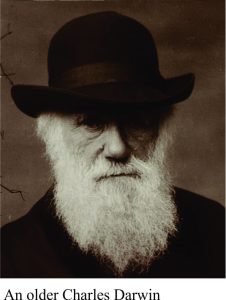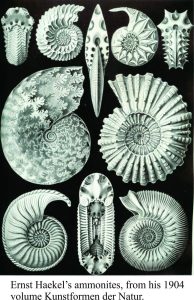

Discussions with evolution nay-sayers commonly revolve around different perspectives of what is fact and what is theory. Darwin, in his Origins, discussed both; Darwin, and most scientists involved in evolution since, regard it as a fact; evolution has taken place in the past and is still taking place. However, recognition that something is a fact does not mean that we necessarily understand how it takes place, the mechanisms by which adaptation and speciation occur. These mechanistic explanations are part of evolutionary theory, and theory in this sense is the structure that allows us to interpret the facts, to infer and predict, to design new experiments or ways of observing that enable us to test the veracity of our ideas. Natural Selection was Darwin’s theory that helped explain the facts he observed.
Darwin’s facts


Jump ahead 150 years
Natural variation and speciation is all around us. New strains of bird flu or Hong Kong flu viruses develop with surprising alacrity. Bacteria, at least the nasty kind, have developed immunity to many of the antibiotics we administer to people, cows and chickens, to the extent that world health authorities are anxious. Bacteria, viruses and yeasts provide an excellent platform to examine evolutionary changes over many 1000s of generations in a relatively short time. We also have the technology to tear apart their genetic codes. One of the longest running experiments at Michigan State University has generated over 60,000 generations of E coli, that over 29 years has resulted in measurable mutations in the experimental populations. The bacteria now grow 80% faster than the original lines, and one population has mutated to enable it to metabolise citrate. Some of the mutations go well beyond what would normally be used to define E coli as a species.
Viruses can mutate much more rapidly than multicellular organisms. But while there may be a multiplicity of new mutations, only a few of these will survive or develop into virulent new strains depending on the characteristics of selection. The new strains of avian flu (H5N1) are a case in point; one new variant (H7N9) seems to have evolved from other viral strains. The concern here is that the virus may evolve into a form where it can be transmitted by humans. In a similar way, the 2014 outbreak of Ebola in West Africa involved a new strain of the virus (identified in gene sequencing) .
Whence the missing links?
Fossils, our primary evidence for lives past, are one of the foundations of earth science. They are pivotal to any discussion on evolution. Darwin recognized, as have countless paleontologists since, lineages of fossil groups where one species is replaced by another that has some new characteristics, but also possesses some of the traits of its predecessor. Such evolutionary lineages have sometimes been compared with a branching tree.
The phrase missing link is commonly used by some commentators to denote the rather obvious fact that, in the fossil record, we commonly do not see forms that might be transitional between successive species; most scientists steer clear of this phrase, using instead something like transitional forms. Deniers of evolution are fond of missing links; if you cannot demonstrate clearly all transitional forms then you cannot demonstrate that evolution has taken place. This is a lazy argument. From a practical point of view, there may have been many transitional forms, mutations and so on, from one species to the next; we know this from the kind of experimental data noted above. Many of the mutations may also have been evolutionary dead ends, unable to adapt or survive the selection process and unlikely to be preserved. And where does one draw the line for what might be construed as a sufficient number of transitional forms; the question itself is a bit like a never-ending do-loop.

Darwin’s Day
Darwin’s legacy encapsulates the marrying of facts with explanatory theory. It is a reminder that science is never static, that it too evolves with a mixture of curiosity, creativity, experiment and analytics. Evolution is a cornerstone of modern science.

Pingback: click here